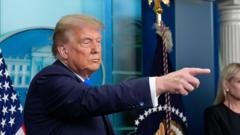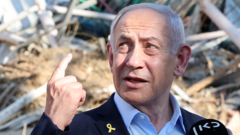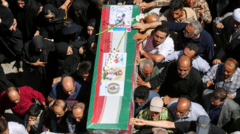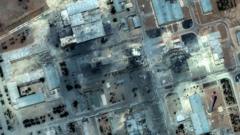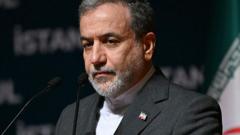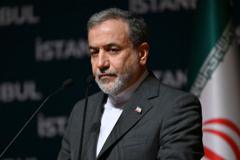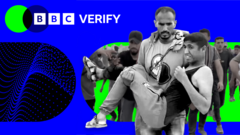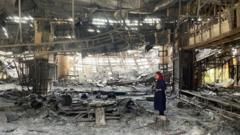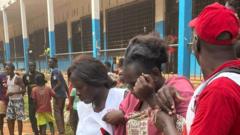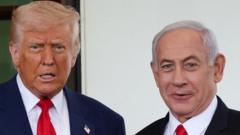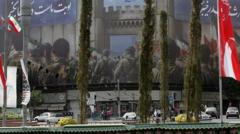In Tehran, the Boof cafe symbolizes the delicate balance between returning to normalcy and coping with the psychological toll of recent conflict. Amidst ongoing tensions, citizens express a desire for better relations and grapple with the impact of violence on their lives, revealing a city striving for resilience against an uncertain future.
Tehran's Resilience Amidst Chaos: A City Unshaken Yet Shattered
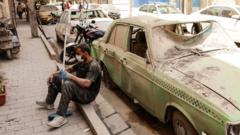
Tehran's Resilience Amidst Chaos: A City Unshaken Yet Shattered
As life in Tehran tentatively resumes, residents grapple with the aftermath of conflict and the scars left behind, highlighting a city caught between hope and fear.
In the bustling heart of Tehran, the Boof cafe stands as a beacon amidst the chaos, serving chilled iced Americanos on sweltering summer days. This café, nestled in the shadow of the former US embassy, reflects the complex sentiment towards the nation across the ocean. As barista Amir pours coffee, he voices a common hope: "We want relations to improve between America and Iran," acknowledging the strain that US sanctions place on local businesses.
The café's sparse clientele paints a broader picture of a society grappling with its identity. A woman in a black veil sits across from another woman in denim, flaunting the attire rules that restrict women's expression. This clash of tradition and modernity is emblematic of Tehran's ongoing struggle to define itself amidst uncertainty.
Just a short drive away, the state TV station IRIB bears the scars of conflict. A recent airstrike has left its building a smoldering ruin, a stark reminder of the continuous threat that hangs over Iran. Supreme Leader Ayatollah Ali Khamenei's latest address reinforces the narrative of resistance against foreign adversaries, a sentiment that resonates deeply within a population shell-shocked by the violence.
As the dust settles, hospitals like Taleghani General are inundated with casualties from the conflict. Nurse Ashraf Barghi voices the shared anxiety of her colleagues, fearful that more attacks may follow. The echoes of the past weeks remain fresh as they treat both military personnel and civilians, highlighting the indiscriminate nature of the violence.
Beyond the chaos, the city is slowly finding its rhythm again. Streets are bustling with traffic, bazaars are welcoming patrons once more, and concerts provide a semblance of normalcy. Yet, the worry remains palpable. Young residents like Mina articulate their despair, wishing for a brighter future while feeling overwhelmed by the present circumstances.
In the resonant space of Azadi Tower, a patriotic concert draws people of all beliefs together, momentarily setting aside their differences to find solace in shared cultural heritage. As people express their desires for greater freedoms and resistance to foreign pressure, it's clear that Tehran's spirit remains unbroken, even as its residents process the harsh realities of their situation.
International media remains restricted in access, but correspondents like Lyse Doucet work to provide insight into a nation undergoing transformation. The complexities of Iran's aspirations and its fraught relationships with the outside world continue to evolve, and as Tehran strives for stability, the voices of its people become louder amidst the silence of oppression.

